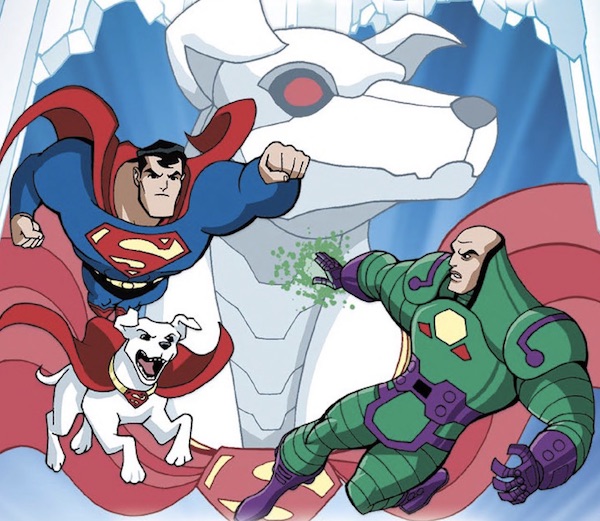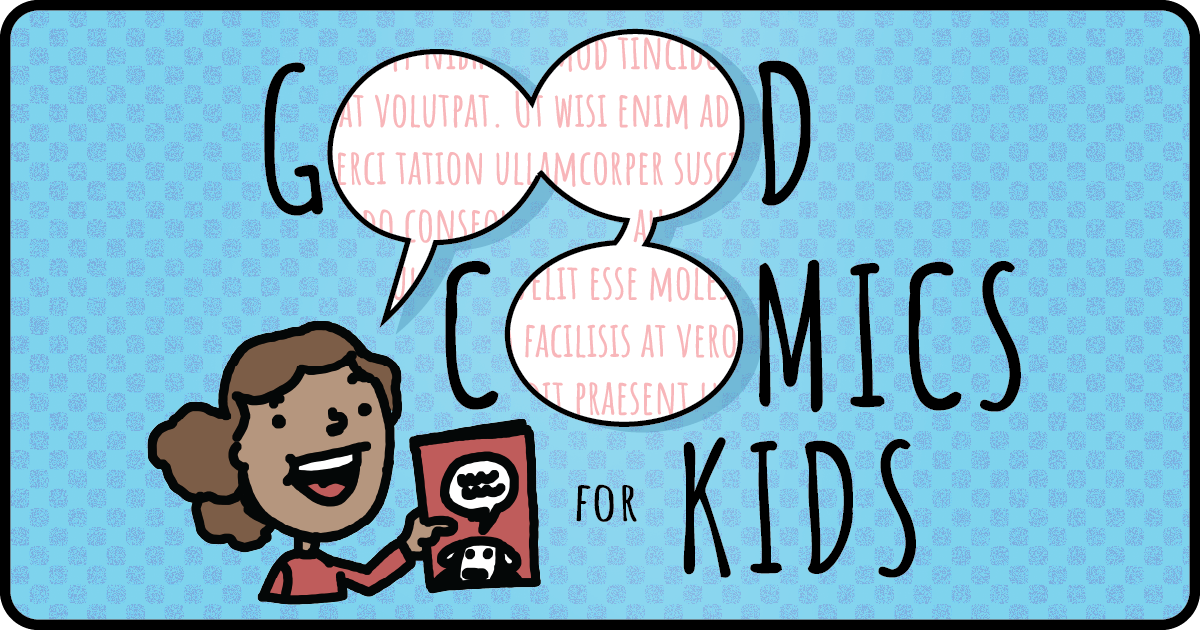
Review: ‘Tales of the Fortress of Solitude’ Chapter Books
Tales of the Fortress of Solitude: The Last City of Krypton
Tales of the Fortress of Solitude: A Buried Starship
Tales of the Fortress of Solitude: The Robot that Barked
Tales of the Fortress of Solitude: Rays of Doom
By Michael Dahl
Illustrated by Luciano Vecchio and Tim Levins
Capstone
Reading Level: Grades 1-3
Interest Level: Grades 4-8
 Each of these short chapter books tells a story about a particular object in Superman’s Fortress of Solitude, and in the process, incorporates an action story. In The Last City of Krypton, Braniac shrinks the Kryptonian city of Kandor and puts it in a bottle, and when he goes to do the same to Metropolis, Superman rescues his own city and takes the bottled city back to his fortress. In The Robot that Barked, Krypto the Wonder-Dog sabotages his robot handlers but is ultimately saved in a fight by a robot dog. A Buried Starship is Superman’s origin story—he was put in a spaceship and sent away from his doomed planet by his parents, and found in a Midwestern cornfield by Martha and Jonathan Kent. And Rays of Doom is about Red Kryptonite, which has unpredictable effects on Superman; in this book, it turns him into a giant insect who becomes the leader of a huge swarm.
Each of these short chapter books tells a story about a particular object in Superman’s Fortress of Solitude, and in the process, incorporates an action story. In The Last City of Krypton, Braniac shrinks the Kryptonian city of Kandor and puts it in a bottle, and when he goes to do the same to Metropolis, Superman rescues his own city and takes the bottled city back to his fortress. In The Robot that Barked, Krypto the Wonder-Dog sabotages his robot handlers but is ultimately saved in a fight by a robot dog. A Buried Starship is Superman’s origin story—he was put in a spaceship and sent away from his doomed planet by his parents, and found in a Midwestern cornfield by Martha and Jonathan Kent. And Rays of Doom is about Red Kryptonite, which has unpredictable effects on Superman; in this book, it turns him into a giant insect who becomes the leader of a huge swarm.
ADVERTISEMENT
ADVERTISEMENT
The version of Superman presented in these books is a simple one. His friends Jimmy Olson and Lois Lane make cameo appearances, as does his secret identity, Clark Kent. There’s no angst or complications: A bad guy threatens Metropolis, and Superman nullifies the threat—albeit in one case with help from Jimmy Olson. That makes these stories pretty straightforward reading.
 The books are written for students with a grade 1-3 reading level but the interest level is grades 4-8. Each paragraph is a single sentence, and the sentences are widely spaced on the page, leaving a lot of white space. Each book has a glossary in the back, and some vocabulary is repeated from book to book, so students will see those words over and over. The illustrations are colorful and filled with action, sometimes carrying aspects of the story that don’t come through in the text (as in The Robot that Barked, where it is clear from the illustrations that Luthor is gunning down robots, a fact that is not mentioned in the text). While these books are not comics, the words and pictures do work well together to tell a complete story. Each one has questions and writing prompts at the end to encourage readers to think more deeply about the book.
The books are written for students with a grade 1-3 reading level but the interest level is grades 4-8. Each paragraph is a single sentence, and the sentences are widely spaced on the page, leaving a lot of white space. Each book has a glossary in the back, and some vocabulary is repeated from book to book, so students will see those words over and over. The illustrations are colorful and filled with action, sometimes carrying aspects of the story that don’t come through in the text (as in The Robot that Barked, where it is clear from the illustrations that Luthor is gunning down robots, a fact that is not mentioned in the text). While these books are not comics, the words and pictures do work well together to tell a complete story. Each one has questions and writing prompts at the end to encourage readers to think more deeply about the book.
Reading one of these books is not unlike watching a Saturday morning cartoon in terms of complexity. They are filled with action and a bit of characterization, and the colorful illustrations really complete the package.
Filed under: Reviews
About Brigid Alverson
Brigid Alverson, the editor of the Good Comics for Kids blog, has been reading comics since she was 4. She has an MFA in printmaking and has worked as a book editor, a newspaper reporter, and assistant to the mayor of a small city. In addition to editing GC4K, she is a regular columnist for SLJ, a contributing editor at ICv2, an editor at Smash Pages, and a writer for Publishers Weekly. Brigid is married to a physicist and has two daughters. She was a judge for the 2012 Eisner Awards.
ADVERTISEMENT
ADVERTISEMENT
SLJ Blog Network
The Moral Dilemma of THE MONSTER AT THE END OF THIS BOOK
Cover Reveal and Q&A: The One and Only Googoosh with Azadeh Westergaard
Parsing Religion in Public Schools
ADVERTISEMENT








